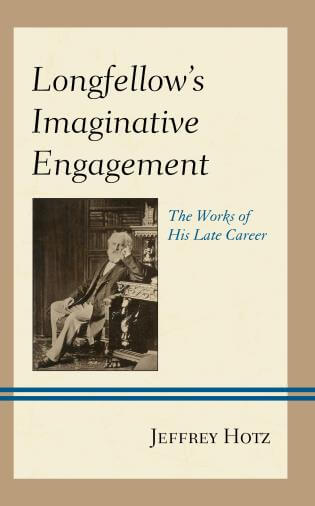Longfellow’s Final Years of Genius

More than any other American poet, Henry Wadsworth Longfellow has permeated American and anglophone culture. From the idiom of “ships that pass in the night,” to the once-routine grade-school memorization of “The Midnight Ride of Paul Revere,” to adaptations of legends such as “Hiawatha,” his works immediately became canon in both popular culture and high art.
Soon after his death in 1882, critics claimed that his popularity was due in part to outdated didacticism and conceptual simplicity. Jeffrey Hotz, however, argues that the first biographer of Longfellow was unnecessarily hagiographical in order to hide his inner conflicts and sorrows regarding both his love and faith life. Rather, Longfellow could not bring himself to commit even to Unitarianism, and his preoccupation with the idea of an ideal woman underlies his widowed years. His poetry tends to use multiple voices regarding morality and politics, and it sets precedent for the ambiguity and abstruseness of the modernist movement.
Perhaps it is in his depiction of women that his values manifest themselves most. His heroines, usually based on women of history or legend, challenge oppressive religious authorities with dignity and success, and their virtues, especially fortitude, are admired as sources of inspiration.
Longfellow’s second wife died from catching fire, and Longfellow suffered substantial burns from attempting to put out the flames. Using archival material and unpublished poem fragments, Hotz shows that Longfellow wished unsuccessfully to believe in the afterlife and in mainstream Christian values, which would have been a comfort. He turned, as he had for years, to literature and legend, including that of The Divine Comedy.
Dante, whose work Longfellow had been translating and teaching as a lifetime project (Longfellow compared dates in his life to those in Dante’s and became the first president of the American Dante Society), had his own preoccupation with the loss of Beatrice, about whom he wrote. Like Dante, Longfellow wrote about idealized, unattainable, virtuous femininity. Unsuccessful in his wish for concrete religious and romantic comfort, Longfellow nonetheless sought solace for his loneliness and trauma by questioning Christian values, traditions, and literatures obliquely or even directly in his poetry. His life might be of special interest to those who in general like to read about artistry as a reaction to suffering, grief, and doubt.
More importantly, Longfellow proves himself purposefully accessible to the general reader and the conduit for many viewpoints – an attitude of pluralism and populism responsible for the international love and respect he has received. Hotz shows that Longfellow extensively revised some of his poetry in order to make the poem “gracefully elusive” as opposed to what later critics might denigrate as stodgily moralizing.
Longfellow’s Imaginative Engagement does the comprehensive work both of a biography and of a literary analysis, covering nineteen years, the final third, of Longfellow’s life. Hotz highlights the original imagery, metaphors, and language that abound, and provides a definitive interpretation of Longfellow’s life and work, heaving the work usually covered by a host of articles.
After a substantial introduction, Hotz organizes the book with sixteen chronological chapters, spread over six precisely labelled parts. The thoughtful epilogue, informed by Hotz’s lifetime study of Longfellow’s era and legacy, is followed by an appendix, a bibliography, a general index, a published poem index, an unpublished poem and poem fragment index, and finally a short, translated poem index.
With the use of little-known archival and unpublished sources, including letters and scribbles from the poet himself, Hotz examines each of Longfellow’s late works in turn, making this an indispensable book for those who want a companion to the life and work of late Longfellow.
Accessible and thorough, it will be of use in academic contexts for research projects and comprehensive, up-to-date information. The amateur reader will find that the first chapters contain much of the biographical material that holds their attention and might lose interest halfway through. Skimming, especially through the sections on Longfellow’s attempts at Biblical epics, might prove helpful.
In reviews of secondary literature and critical opinions, Hotz does take into consideration contrasting views of Longfellow’s work. However, he always ends taking the positive side, even with Longfellow’s Christus: A Mystery, which he claims might not be misplaced if named a great American epic comparable to The Divine Comedy, which it echoes in its structure. A more balanced book likely would take the stance that Longfellow’s works are not uniformly great, especially some of the long historical poems written around the time of Christus, because of his adding little to the original stories and his cautious, watered-down interpretations. Longfellow’s technique and scholarly research, however, is underestimated in current literature, and Hotz’s enthusiasm for his subject is understandable and commendable. Longfellow’s Imaginative Engagement helps to correct this current problem.
Overall, the book is an ambitious victory. Hotz provides such concise context that it is now difficult to imagine reading the original poems without this as a companion.




